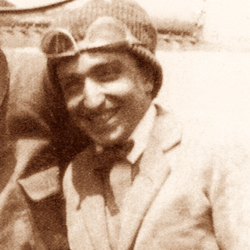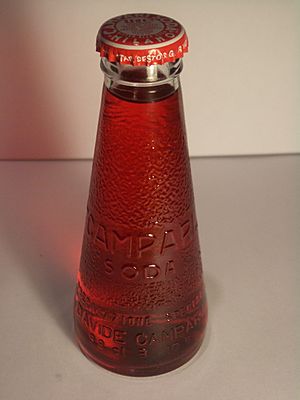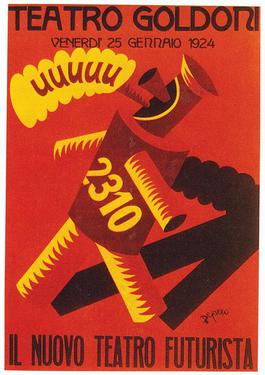Fortunato Depero facts for kids
Fortunato Depero (born March 30, 1892 – died November 29, 1960) was a talented Italian artist. He was a painter, writer, sculptor, and graphic designer. Depero was a big part of the Futurist art movement. This movement focused on speed, technology, and the future.
Contents
Fortunato Depero's Early Life and Art
Fortunato Depero was born in Fondo or Malosco, in the Trentino region of Italy. He grew up in Rovereto. There, he started showing his artwork while learning to work with marble.
In 1913, Depero visited Florence. He found a paper called Lacerba with an article by Filippo Tommaso Marinetti. Marinetti was one of the people who started the Futurist movement. Depero felt very inspired by this.
Joining the Futurists
In 1914, Depero moved to Rome. He met another Futurist artist named Giacomo Balla. In 1915, Depero and Balla wrote an important paper together. It was called Ricostruzione futurista dell’universo, which means "Futurist Reconstruction of the Universe".
This paper talked about making the world "more joyful" through art. They wanted to find abstract ways to show everything in the universe. In the same year, Depero also designed sets and costumes for a ballet.
Depero's House of Futurist Art
In 1919, Depero started the House of Futurist Art in Rovereto. This special place made toys, tapestries, and furniture. Everything was made in the exciting Futurist style.
In 1925, Depero showed his Futurist art at a big international art fair in Paris. He also presented a "Futurist Hall" at the Monza Biennial.
The "Bolted Book"
In 1927, Depero created a very unique book with his friend Fedele Azari. It was called Depero futurista 1913–1927. People often called it the "bolted book" because it was held together with two large bolts.
This book was made to show off Depero's work as an artist and designer. It was a new and creative way to share his art with the world. It celebrated his skills as an artist, graphic designer, and craftsman.
Depero in New York City
In 1928, Depero moved to New York City. At first, things were tough because of the Wall Street crash. His paintings didn't sell well, and his art business closed quickly.
However, he later found success designing costumes for plays. He also created covers for famous magazines like MovieMaker, The New Yorker, and Vogue. Depero even worked on the inside design of two restaurants. He also did work for the New York Daily News and Macy's. In 1930, he returned to Italy.
Later Years and Legacy
In the 1930s and 40s, Depero kept working. The Futurist movement became less popular because it was linked with fascism. But Depero and Balla continued to develop the art style. Depero even started and edited a magazine called Dinamo.
After World War II, Depero went back to New York in 1947. This time, it was still hard to find success. One important thing he did was publish his autobiography in English. It was called So I Think, So I Paint.
From 1947 to 1949, Depero lived in New Milford, Connecticut. He relaxed and worked on his dream of opening a museum.
Depero eventually returned to Rovereto. In August 1959, his dream came true when the Galleria Museo Depero opened. Fortunato Depero passed away on November 29, 1960, at the age of 68.
Fortunato Depero's Artworks
Many of Depero's artworks are kept in the Museum of Modern and Contemporary Art of Trento and Rovereto (MART). The Casa d'Arte Futurista Depero is Italy's only museum completely about the Futurist movement. It has 3,000 objects and is now part of MART. After being closed for many years, the Casa d'Arte Futurista Depero reopened in 2009.
Depero's designs for advertising often used only one color or a special spot color to make text stand out. His full-color designs used Futurist colors like red, brown, and yellow-orange. Sometimes he added bright blue or aqua.
Exhibitions of Depero's Work
From February 22 to June 28, 2014, the Center for Italian Modern Art showed Depero's work. This exhibition explored how his art connected with other styles like Dada and Art Deco.
Literature
- Steven Heller, Georgette Ballance. Graphic Design History. 2001 (p. 153-160)
See also
 In Spanish: Fortunato Depero para niños
In Spanish: Fortunato Depero para niños




